Sushi Kimura brings a whole new definition to Edo-mae-style sushi and sashimi to Singapore, using premium quality seafood, seasonal produce and ingredients freshly imported from markets across Japan on a frequent basis. The contemporary design inspired by Japanese aesthetics provides guests with choice of dining at the open sushi counter or feasting within a private room. This restaurant also boast a sushi counter made from a hundred and fifty year old Japanese cypress tree, the same wood is crafted to chop sticks which are used during dining at this one of a kind dining venue.
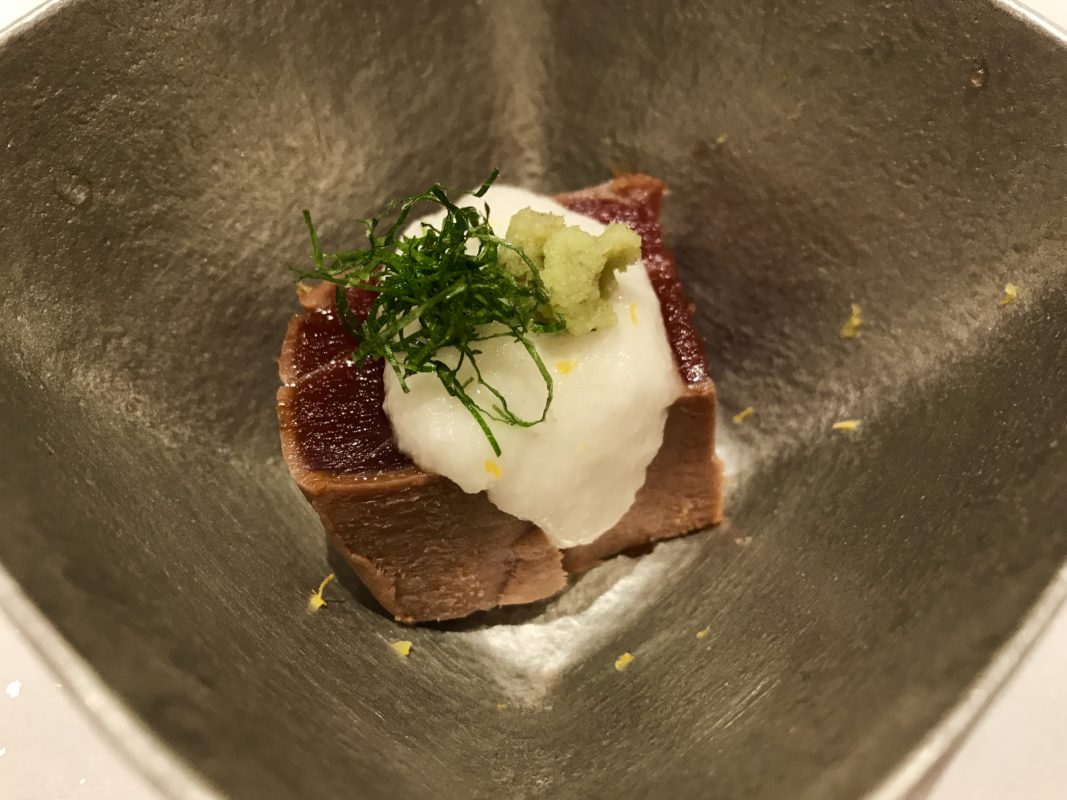
Blue Fin Tuna
Blue fin tuna marinated in the Japanese traditional way using high quality soya sauce (shoyu), topped with Japanese yam (taro) and freshly made wasabi. This dish is finished with yuzu grated in front of diners, adding a dash of citrus notes to the overall deep savoury dish.
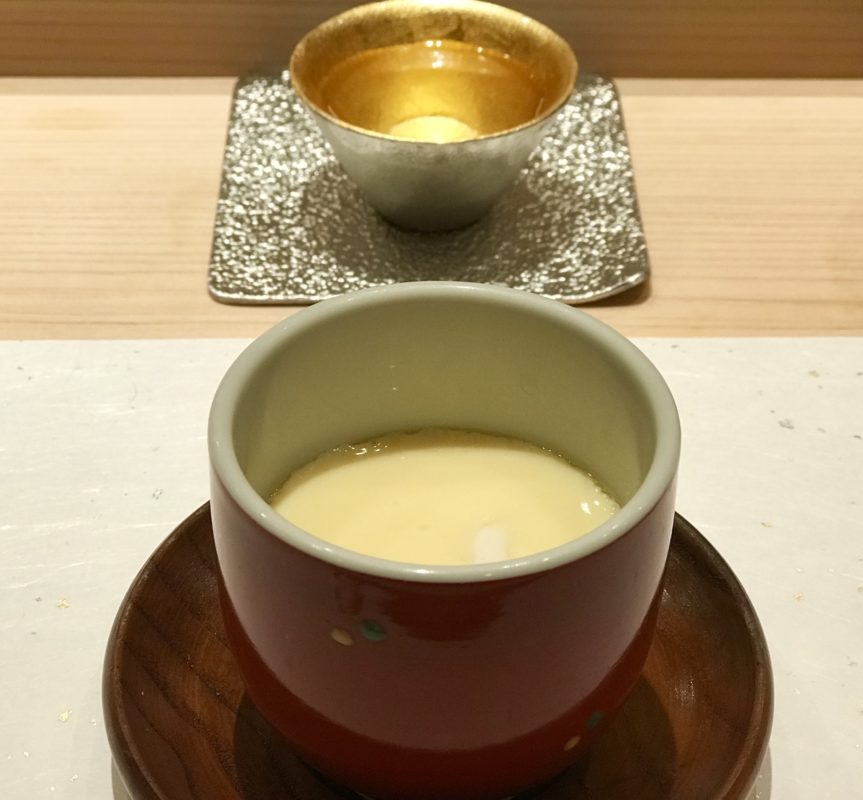
Chawanmushi
A nice surprise of Shirako is hidden inside the chawamushi made with Japanese organic eggs mixed with tantalising sourly bites of Japanese ume (plum) bringing forth its delicate flavours with every bite of this creamy goodness. A twist to the classic, well done.
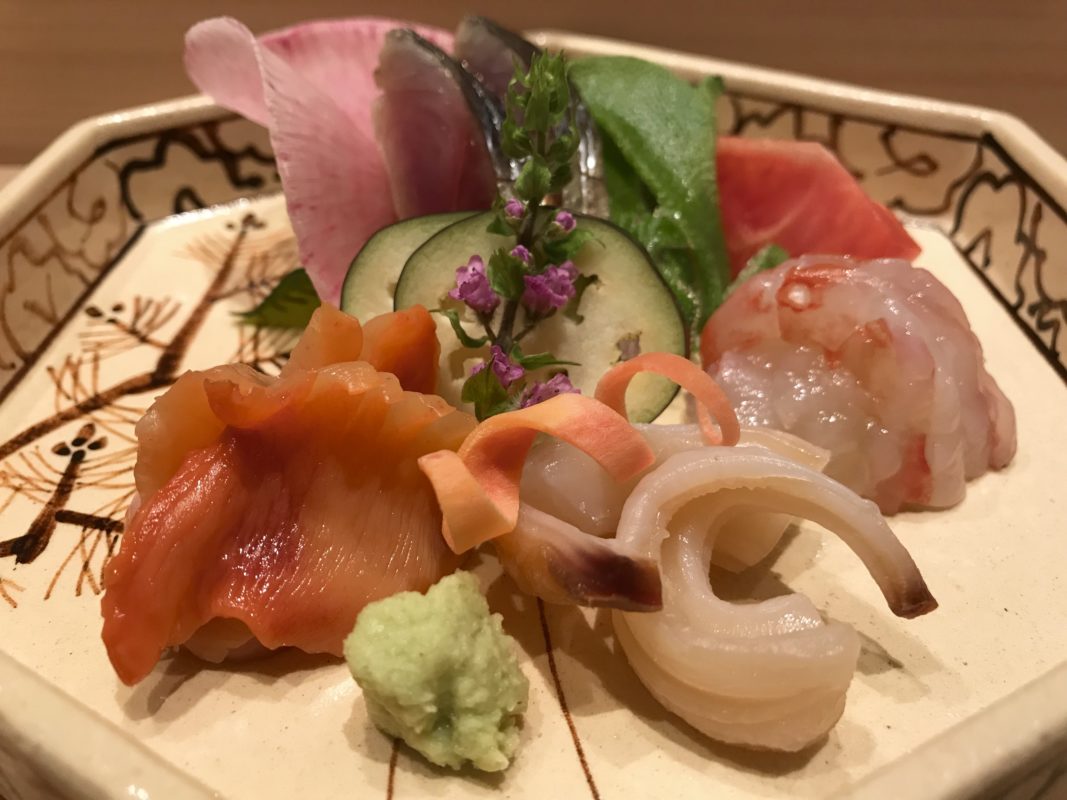
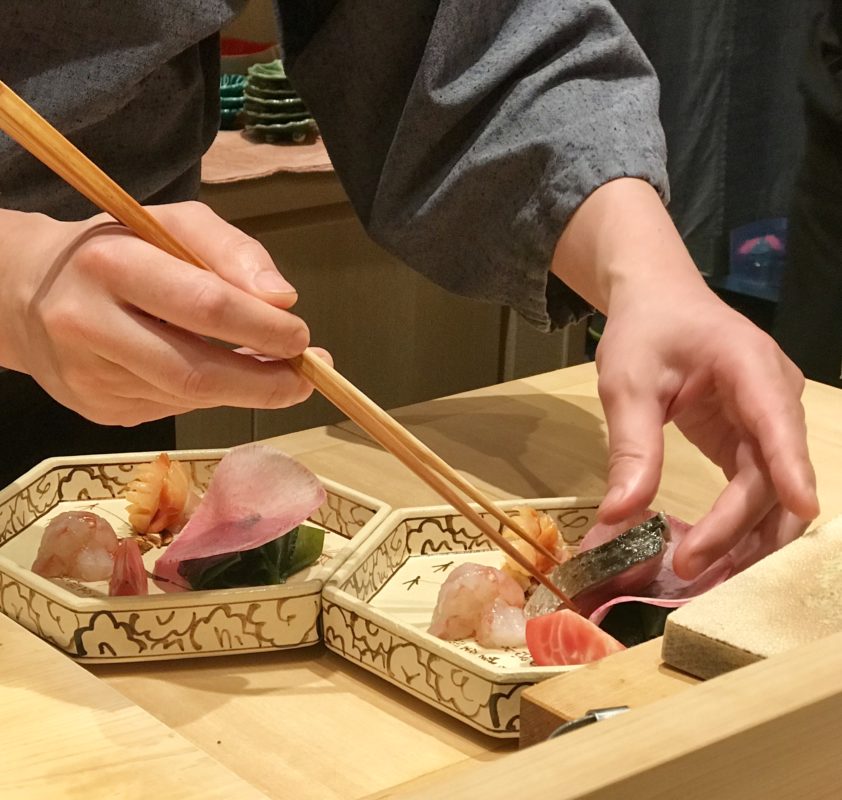
Sashimi Preparation
A sublime mix of Sashimi featuring, ultra fresh Hokkaido botan prawn and arkshell, Mie geoduck clams and mackerel lightly grilled over Japanese charcoal (this type of charcoal is virtually smokeless while absorbing bad smells causing the fish to inherit a delicious smoky aroma and taste). Beautifully plated with ice plant (slightly salty and crunchy), egg plant, tomato, red radish, garnished with shiso flowers and carrot, on a base of nutrient rich seaweed. The flowers from the shiso can be plucked and put into your shoyu for a delightful dip, complimenting almost every type of sashimi available.
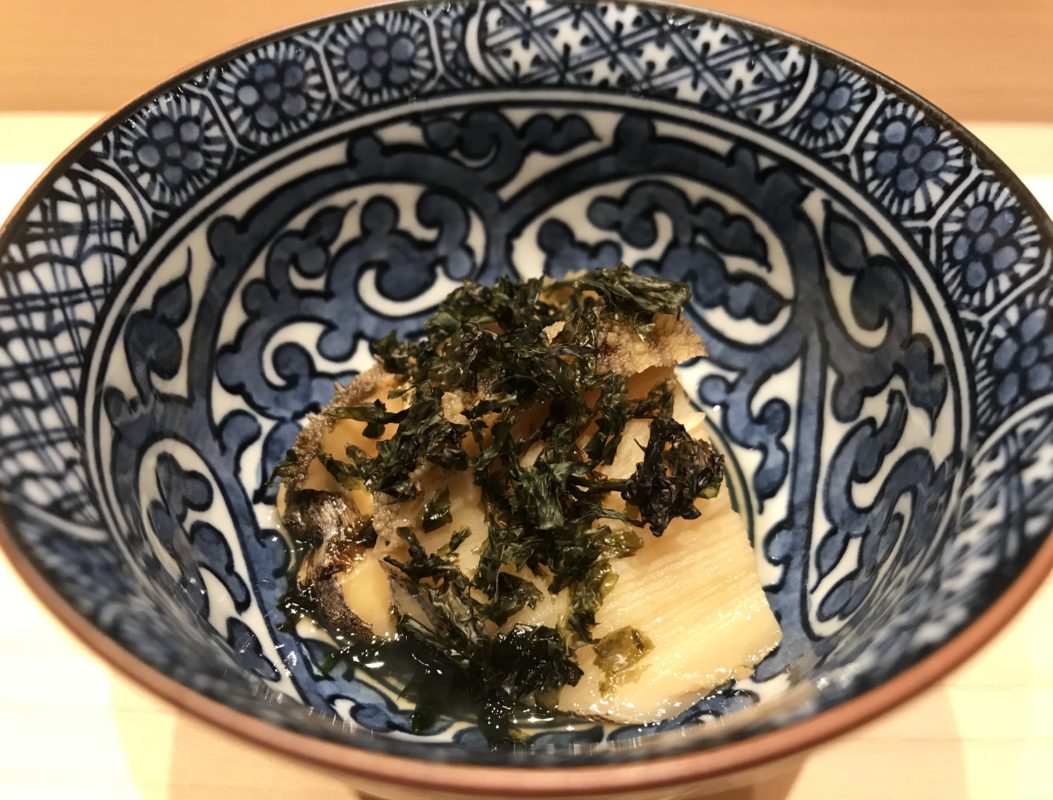
Japanese Abalone
Japanese abalone from Hokkaido are soaked in one hundred percent sake for eight hours yielding an amazing tender texture. Premium dried seaweed from Saga completes this dish. Usually a mix of mirin and sake is use for marination but the above “pure sake” method causes the abalone to end up fuller and richer in flavour.
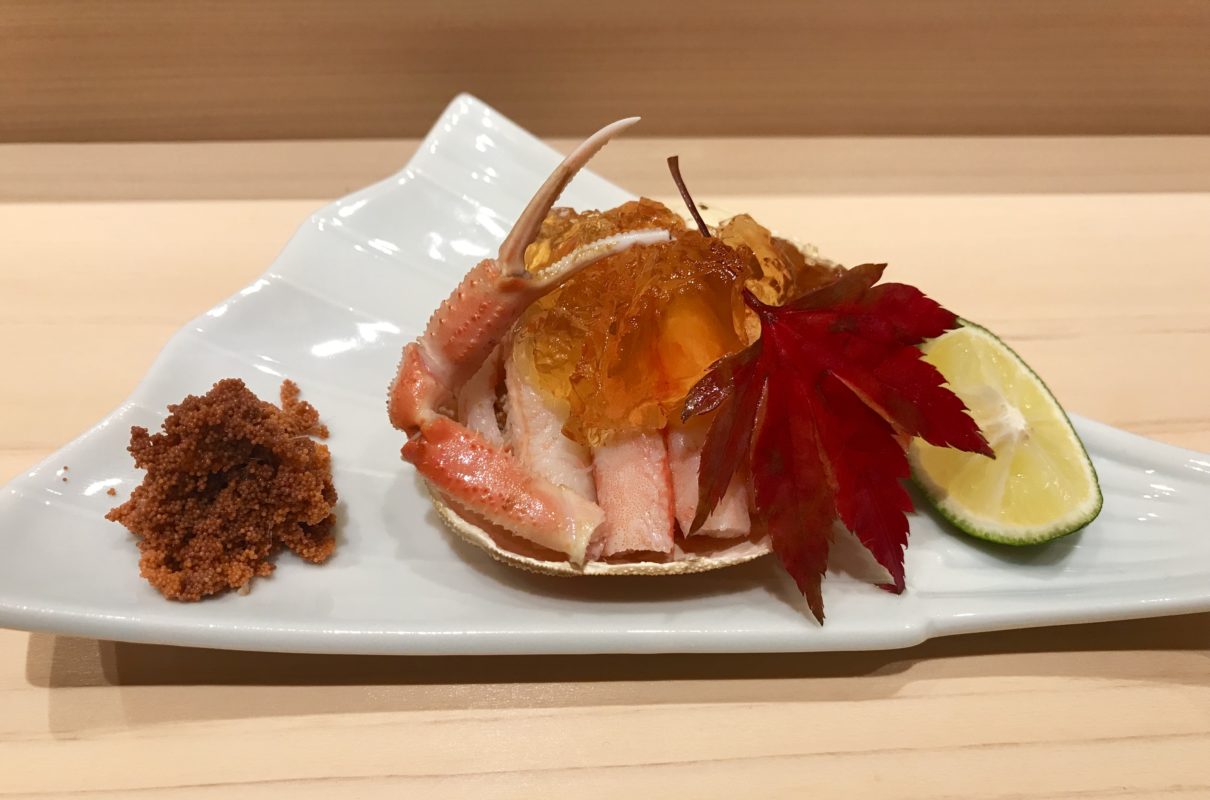
Japanese Snow Crab
Female snow crabs are used, smaller in size than their male counterparts but packed full of roe. The darker orange roe is more crunchy (held by the crabs outside their belly) and the pale yellow roe on the inside of the crab is more intense taste wise. Dashi jelly covers the crab meat served on it’s shell with lime at the side.
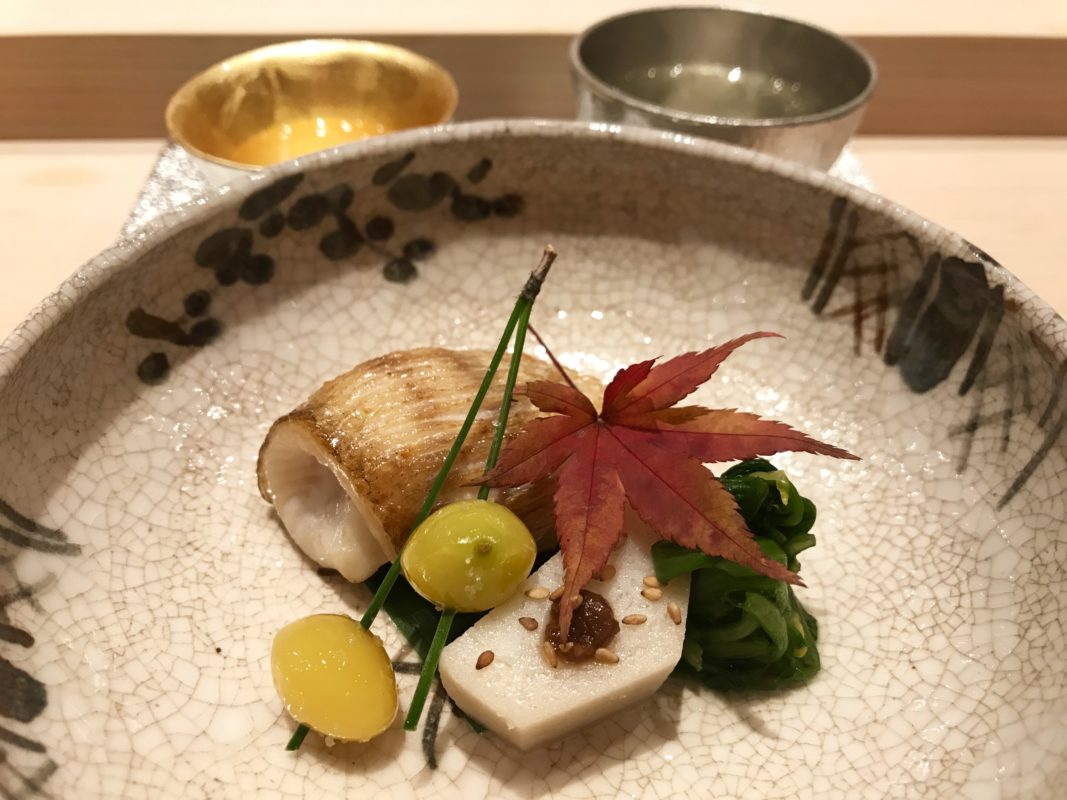
Sea Perch
Sea Perch with Kyoto yam, gingko and spinach. Again a play of colours in the presentation of this dish, meticulously done to perfection yet holding true to harmony of taste with complimentary ingredients to bring out the best from each produce.
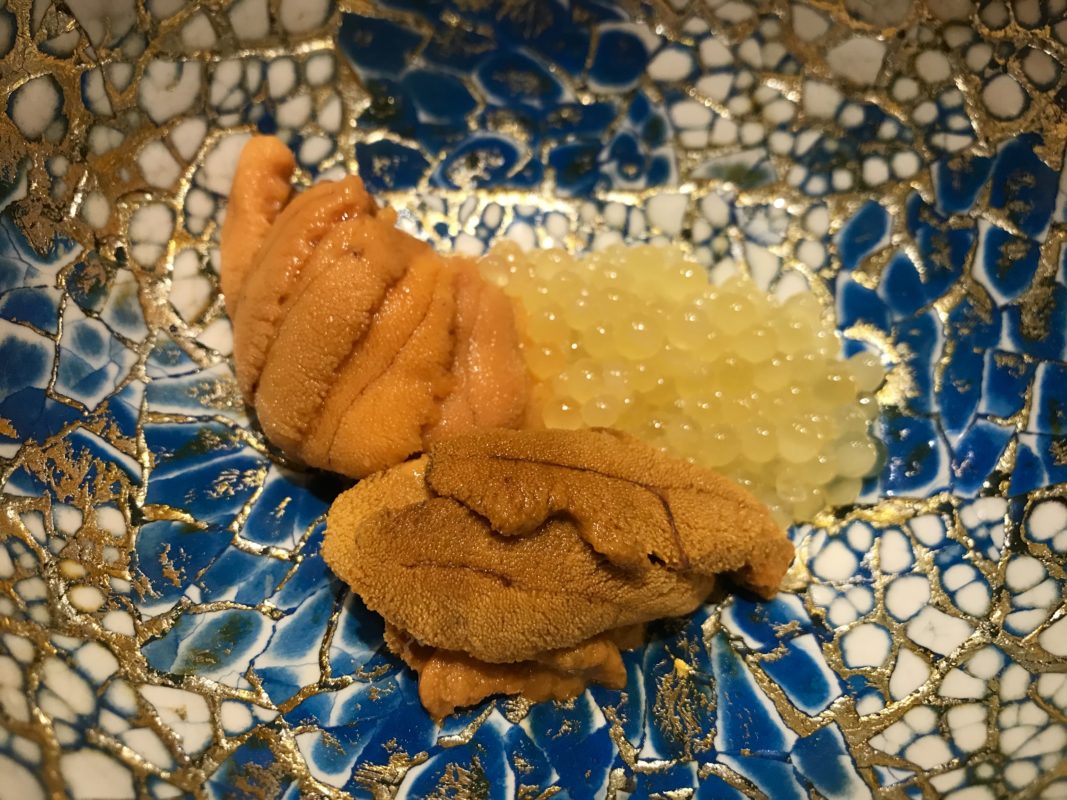
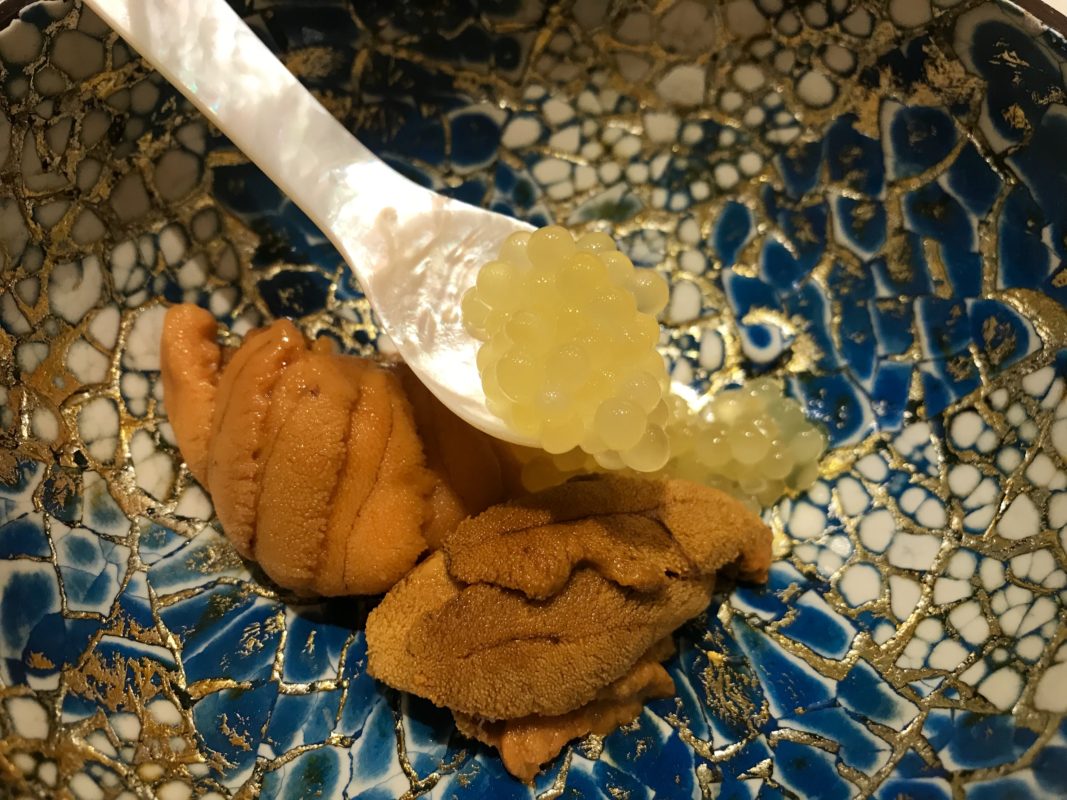
Duo of Bafun Uni
The decadent almost pillow like Buffon uni dish showcase two types, one with shorter spikes and the other much longer, from north and south Hokkaido respectively paired majestically well with golden caviar. Called The Golden Roe which is extremely rare, a direct relationship with fishermen is needed in getting your hands on these precious golden bubbles of joy. Chef explains that the roe is from the Iwana trout of Miyazaki prefecture which are vegetarian fishes thus producing these golden colour eggs. The more common red roe are fishes who eat small shrimps and crabs. The darker Uni is more intense in flavours with added taste from the truffle oil. You can roll them all together on the provided seaweed strip and bite down for that mind blowing experience.
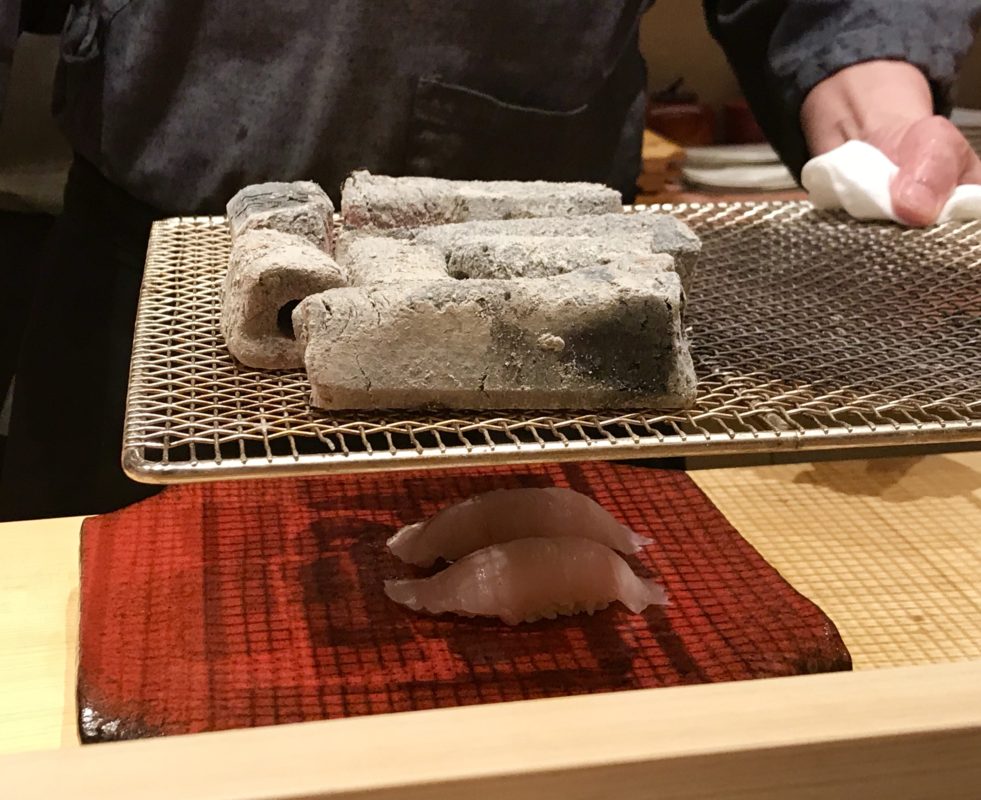

Sushi
Sushi comes towards the end of your omakase, highly recommended is the Buri (usually grown to a weight of ten kilograms) the fattest of the yellow tail even more then Hamachi (that is usually grown to around five kilograms). Interesting to note that the Yellowtail as with other Japanese fishes are called different names as they grow. Another favourite is Kamatoro (flesh from the wild tuna’s neck area) aburi sushi, painted with a splash of soya sauce before being served. Charcoal is use to aburi, melting the fish fats lovingly and letting it seep into the rice, a modern cooking method brilliantly executed.
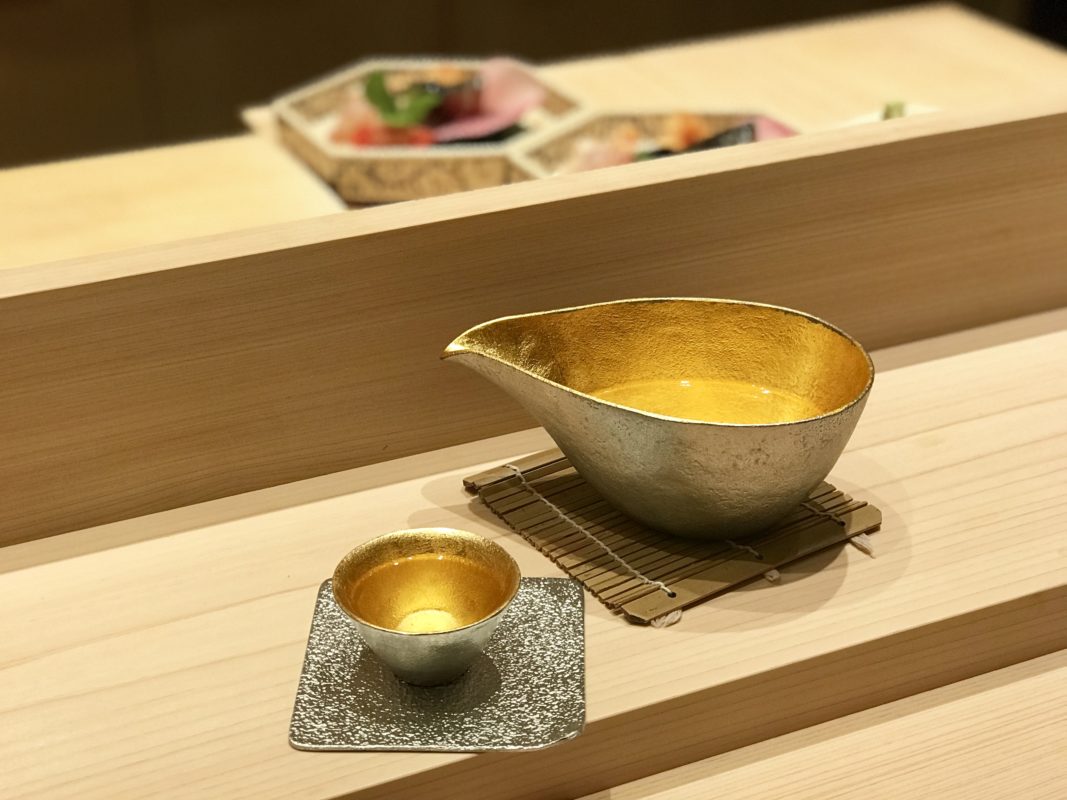
Japanese Pear, Mikan orange, sesame mochi (Japanese sweets) with organic home made red bean paste and wafers are the dessert of desserts. You cannot go wrong with the Japanese and their fruits with its natural sweetness coupled with their famed sweets.
An extensive list of sakes are available to go with your omakase. Simply choose from the sheer variety of labels including some rare bottles or leave it to the well trained and world class service team to pair your dishes as they come. A return reservation is in order.
ADDRESS:
390 Orchard Rd, 01-07, Singapore 238871
PHONE: +65 6734 3520
WEBSITE: http://sushikimura.com.sg/